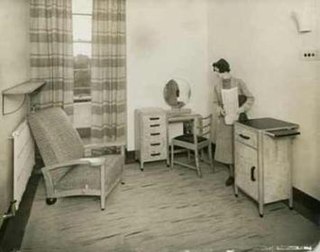
Robin Gerard Penleigh Boyd was an Australian architect, writer, teacher and social commentator. He, along with Harry Seidler, stands as one of the foremost proponents for the International Modern Movement in Australian architecture. Boyd is the author of the influential book The Australian Ugliness (1960), a critique on Australian architecture, particularly the state of Australian suburbia and its lack of a uniform architectural goal.
Sir Roy Burman Grounds was one of Australia's leading architects of the modern movement.

Dr Norman Kingwell Day is an architect, educator, and writer.
Philip J. Goad is an Australian academic, currently serving as Professor of Architecture in the Faculty of Architecture, Building and Planning at the University of Melbourne. He is also a former President of the Victorian Chapter of the Royal Australian Institute of Architects.
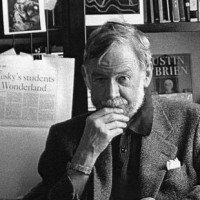
Peter Russell Corrigan was an Australian architect and was involved in the completion of works in stage and set design.
The Melbourne City campus of the Royal Melbourne Institute of Technology is located in the city centre of Melbourne in Victoria, Australia. It is sometimes referred to as "RMIT City" and the "RMIT Quarter" of the city in the media.

Peter McIntyre is an Australian architect and educator.
Neil Clerehan was an Australian architect and architectural writer.
Wood Marsh Pty Ltd Architecture is a Melbourne based Australian architectural practice founded by Roger Wood and Randal Marsh in 1983.

RMIT Building 8 is an educational building, part of the RMIT University's City campus in Melbourne, Victoria. It sits at 383 Swanston Street, on the northern edge of the Hoddle Grid that defines Melbourne's city centre.
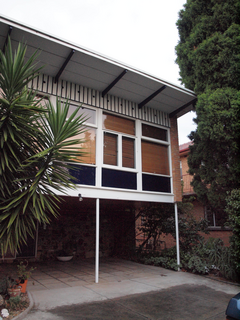
House at Caulfield, is a family home situated at 450 Dandenong Road in Caulfield North, Melbourne, Victoria, Australia. Designed by Anatol Kagan in 1956 whilst working at his practice Kagan & Associates. Russian-born on October 4, 1913 Anatol Kagan's career as an Architect spanned over seven decades until his death on July 2, 2009. He was actively involved in the field of design, also as a writer, translator, lecturer and political activist. The House is an important work of its period demonstrating the Modernist architectural movement of Melbourne during the 20th Century, in which he 'favoured rectilinear modernist compositions, often with protruding bays and timber mullioned window walls shaded by deep eaves'. The practice and Kagan himself were influenced by the works of Roy Grounds, Frederick Romberg and Robin Boyd.
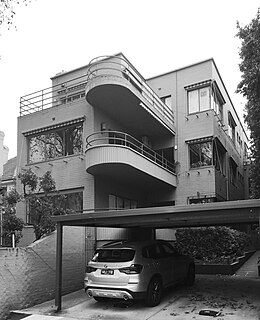
Yarrabee Flats is a building located at 44 Walsh street, South Yarra, Melbourne, Australia consisting of five flats. Built in 1940. it was designed by the Australian architecture firm, Romberg & Shaw, and is known for introducing European Modernist architecture into flat development in Melbourne.

The MacFarland Library at Ormond College, the University of Melbourne, completed in 1965, was Frederick Romberg’s second building for Ormond College. The initial scheme for the building in 1962 was a largely classical building that drew on elements from many of Romberg’s buildings from the previous decade. The subsequent revised scheme better complemented the rest of Reed and Barnes’ Gothic Revival Ormond college. The central plan of the library is a tribute to long tradition of library building including the Melbourne Public Library’s domed reading room, which involved Joseph Reed, Selwyn Bates, Norman Peebles and Charles Smart.
Arthur Baldwinson (1908-1969) was one of Australia’s first generation of prominent modernist architects to experience the European modernist movement first hand. His modernist contemporaries include Roy Grounds and Frederick Romberg in Victoria, as well as Sydney Ancher and Walter Bunning in New South Wales; their respective Australian architectural careers in modernism began in the late 1930s. Baldwinson’s active professional career as an active practising architect was relatively short (1938-1960).
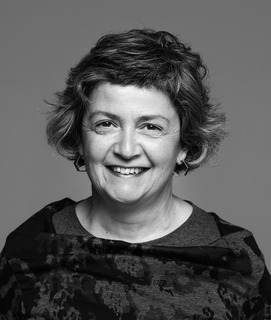
Eli Giannini is an Australian architect and director of MGS Architects in Melbourne. Giannini completed her architectural undergraduate studies at RMIT University in 1983 and Master of Design (Thesis) in 1903, entitled ‘Metro-scape’. Soon after her undergraduate studies in 1989, she joined MGS Architects with Robert McGauran and Mun Soon. In 2002 she was selected as President of the Victorian Chapter of the Australian Institute of Architects, a position occupied until 2004.
Kelly Rattigan is an Australian architect and the founding managing director of Formworks Architecture.
Harriet Edquist is an Australian curator, and Professor of Architectural History in the School of Architecture and Design at RMIT University in Melbourne. Born and educated in Melbourne, she has both published widely on and created numerous exhibitions in the field of Australian architecture, art and design history. She also contributes to the production of Australian architectural knowledge as a director of the RMIT Design Archives and is a member of the Design Research Institute at RMIT University.


